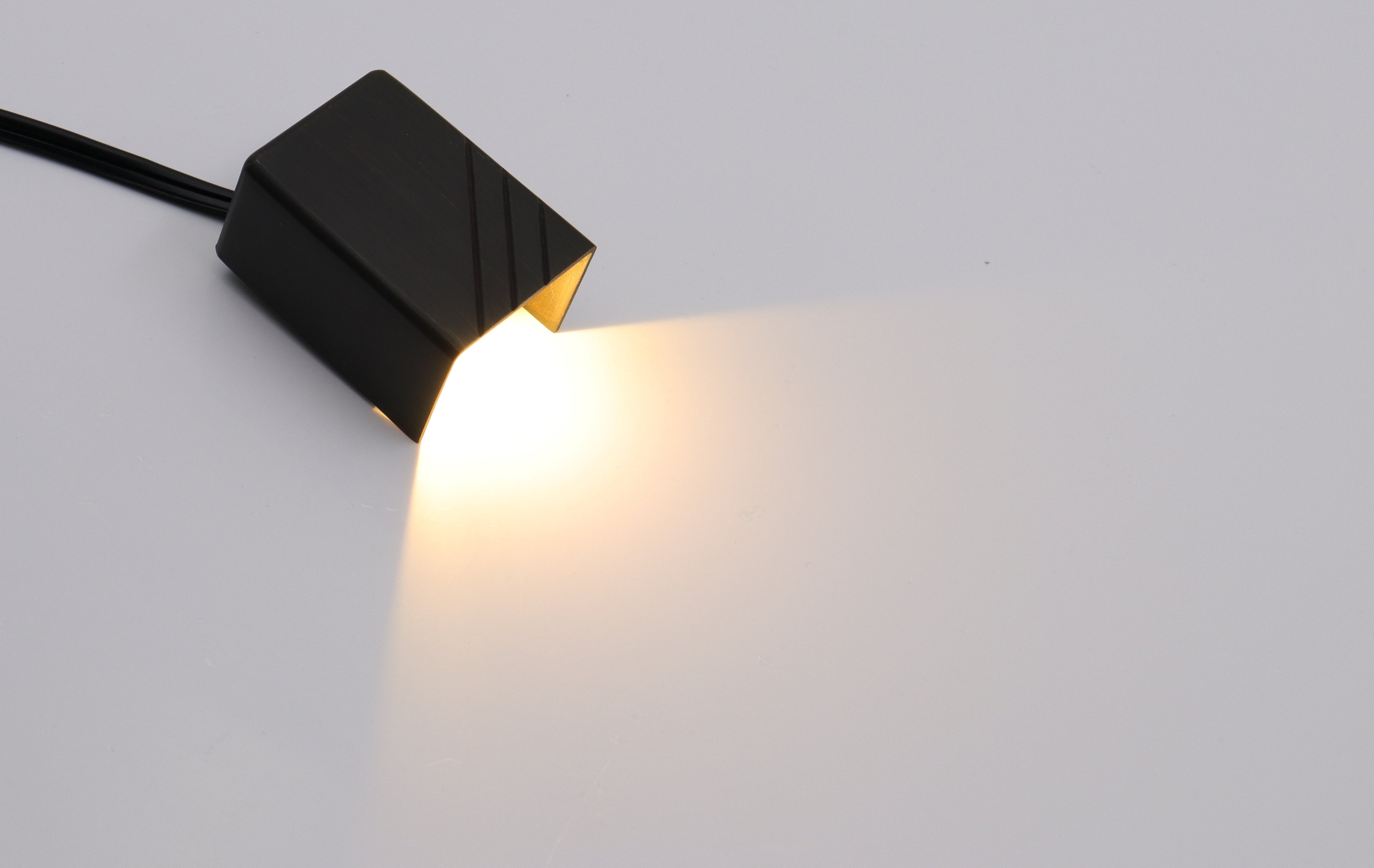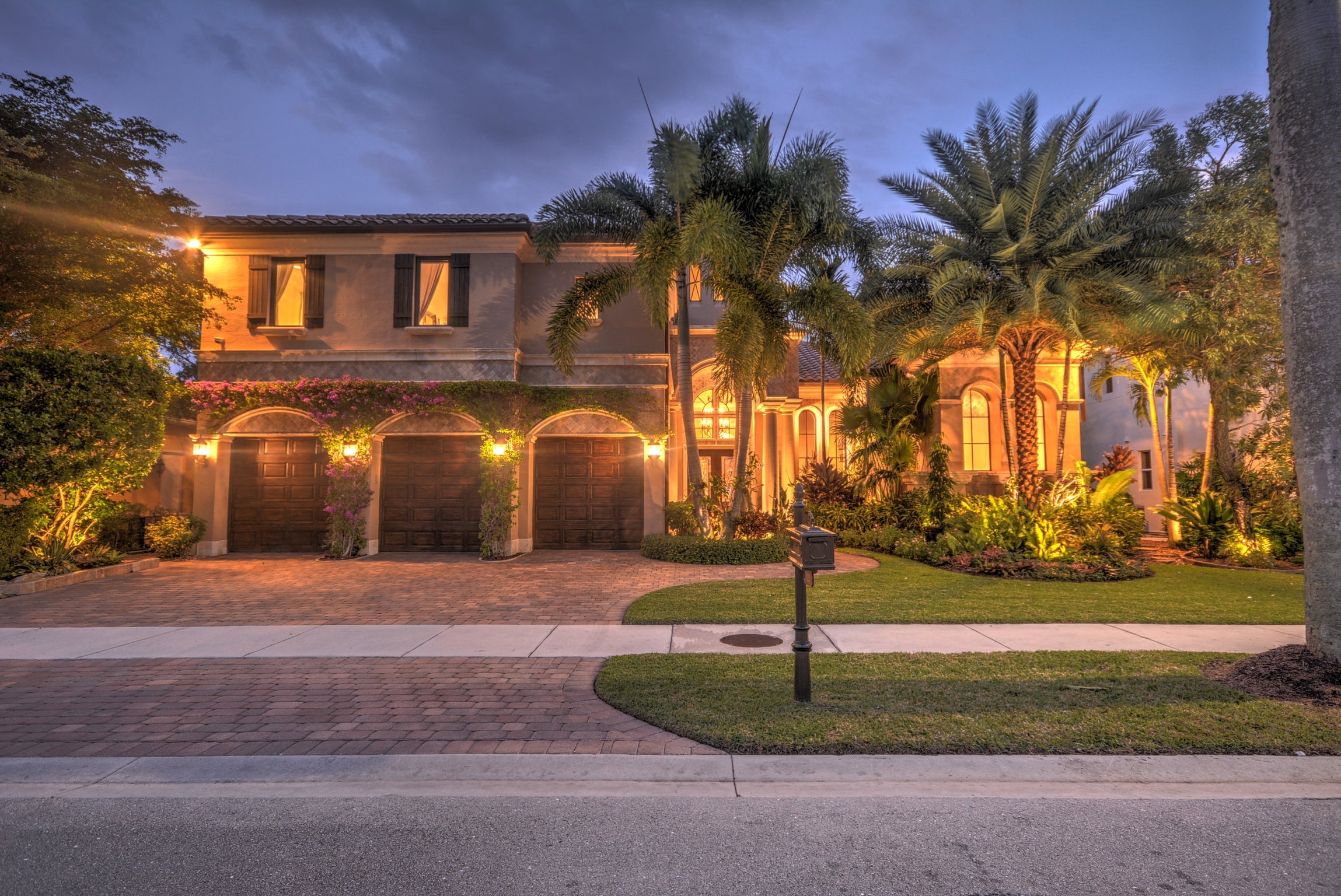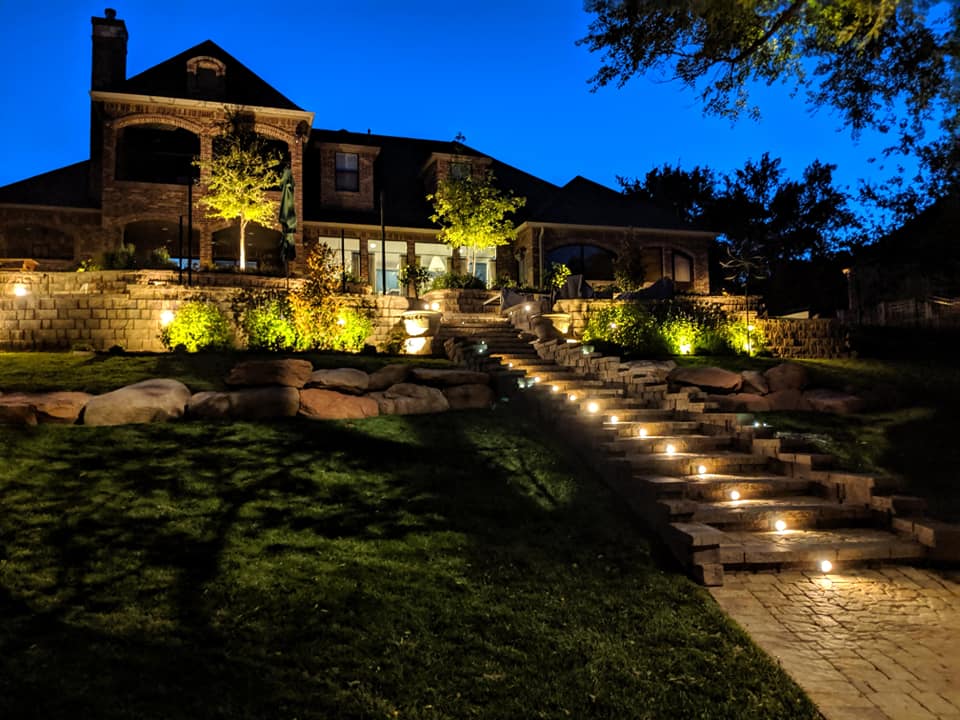Outdoor lighting can completely transform the look and feel of your home's exterior. Strategically placed landscape lighting highlights the best features of your home and yard while creating an inviting ambiance after dark. The interplay of light and shadows draws attention to plants, pathways, architectural details, and more.
When designed well, landscape lighting goes beyond basic visibility and security to create dramatic effects. Thoughtful lighting choices set the mood and extend the usable hours of your outdoor living space. This guide will explore how to use lighting to showcase the natural contours and features that make your landscape unique. We'll also discuss lighting techniques to add depth, highlight focal points, and cast just the right balance of light and shadow.
Use Lighting to Define Spaces and Focus on Features
One of the integral keys to creating an inviting ambiance with lighting is to clearly define specific spaces and strategically draw attention to special standout features. Carefully positioned lighting provides a framework that allows the eye to naturally focus on the areas you want to highlight.
You can define and delineate exterior spaces by artfully showcasing transition areas and boundaries. Gracefully graze walkways and steps with low-voltage, energy-efficient LED lighting to safely illuminate a path for navigation. Line driveways with understated yet effective ground-level lighting to establish a sense of anticipation and arrival. Use elegantly silhouetted tree up-lighting to frame and enclose an outdoor living room.
Within the spaces, focus on artistically illuminating design elements and lush plants. Subtly uplighting placed in select ideal spots can transform a fountain or eye-catching specimen plant into a striking dramatic focal point after dark. Flatteringly install recessed lighting or directional spotlights to highlight architectural details on buildings and bring out the best in the designs.
Lighting can also be used to accentuate the alluring lines and forms of your home's exterior. Grazing lighting casts a glow across textured surfaces at sharp calculated angles to dramatically pick up on the contours and textures. Tactically highlight vertical lines and corners by positioning up-lighting adjacent to your home's corners and sides. Learn more about the advantages of choosing uplighting.

Enhance Ambiance With the Interplay of Light and Shadow
It's not just the lit surfaces that contribute to the ambiance, but also the interplay of shadows they cast. You can create remarkably inviting outdoor spaces by skillfully balancing light and shadow.
Strategically use lighting to showcase plants' natural shapes and textures. For instance, thoughtfully positioned moonlighting placed low in a tree or shrub illuminates the plant's form while creating intriguing shadows that add depth. Silhouetted plant lighting placed behind or within plants creates artistic backlighting to make the vegetation gently glow against the night.
Shadows also impart important depth and dimension. Uplighting structures and architectural features create dramatic shadows that accentuate the shapes, lines, and forms. Subtle path lighting casts long shadows that impart a pleasing sense of space and boundaries.
Outdoor lighting design requires illuminating surfaces while also revealing contours and textures. Place lighting at varying, staggered heights and at different calculated angles rather than uniformly lighting everything. Use light to underscore edges, corners, and recesses. Mixing overhead, uplight and silhouetted backlighting adds attractive visual interest and atmosphere.

Set the Mood With Lighting Choices
The ambiance and vibe you want to achieve in your outdoor living space should inform your landscape lighting selections. Carefully consider how lighting color, brightness, and intensity can work together to create an ambiance that encourages and accentuates the desired activity or mood.
Warm white and soft white light settings often feel innately welcoming, cozy, and comfortable - perfect for creating a laidback lounge area vibe. Dramatic uplighting paired with strategic shadows better matches a luxurious high-end resort mood. Bright, ample lighting invites lively activity and gatherings in a recreation area while low intensity sets a serenely calm, relaxed tone ideal for a meditation zone.
You can use lights with adjustable color temperature and hue to easily transition the settings for different uses at various times. Warm amber or yellow lights in the evening can transform into cool blue and green hues to facilitate a lively nighttime party space. During the day, bright crisp white light enhances visibility for sports and games.
Programmable and dimmable smart light systems make it simple to intuitively control brightness and even mimic gradual changes in natural light. Set lighting to slowly, almost imperceptibly brighten in the morning to create a warm, inviting breakfast nook ambiance. Then gently dim the lights as the sun sets to transition into a cozy, peaceful nighttime feel.
Place accent lighting on architectural features or specimen plants to spotlight them when you want dramatic flair. Wall sconces with adjustable arms allow you to pivot and direct light where needed most. Dimmers give you total control over the illumination level to set the perfect mood. For expert tips, see this guide on uplighting and downlighting for trees.
Automated smart lighting opens up countless possibilities for effortlessly customizing ambiance according to activity or time of day. Utilize pre-programmed settings to match the lighting with how you intend to enjoy your landscape.

Lighting Techniques for Creating Dramatic Outdoor Ambiance
- Silhouetting: Strategically positioning lights behind or within vegetation and structures creates striking silhouettes. Backlit plants and trees appear to magically glow from within while silhouetted statues, fountains and architecture are highlighted in a flattering way against the nighttime background.
- Grazing: Grazing lights are angled to cast illumination across textured surfaces at sharp angles to dramatically pick up on contours, lines and details. Gracefully graze walkways, walls and other linear hardscape features to accentuate the surface textures. Grazing adds depth and dimension to ordinary surfaces.
- Washing: Washing structures with broad, even illumination minimizes shadows and textures to provide a soft, uniform light that "flattens" surfaces. Gentle washes of light can beautifully accentuate exterior colors and clearly showcase shapes without harsh shadows.
- Layering: Use lighting at varying heights to build captivating layers of light. Overhead canopy lights, mid-level step and post lights, and low ground-level lights intermingle to add depth and complexity. This technique mimics natural multilevel lighting.
- Highlighting: Focus attention on important plants, architectural features and design elements by using spotlights, downlights or targeted flood lights. Uplighting, downlighting and backlighting can create dramatic accents and focal points. Highlighting draws the eye to special details.
- Transition Lighting: Use planned lighting choices to gracefully delineate unique zones and define the transitions between different spaces. This creates natural continuity and flow as you move between areas.
- Mixing Light Colors: Incorporate lights with complementary but different hues and color temperatures to add visual interest. Varying light colors can highlight different plants and features according to their natural colors.
- Creating Contrast: Contrast is an important design principle for generating ambiance. Use lighting to strategically contrast light and shadow, natural and formal elements, colors, textures, sizes or shapes. Contrast adds eye-catching dynamism.
Conclusion
The creative interplay of light and shadow brings your exterior to life after dark. Analyze how you use your outdoor space and what you want to highlight. Tailor lighting techniques and fixtures to not only illuminate but also to provide an ambiance that enhances your landscape's unique personality. A professional lighting designer can help devise an artistic lighting plan that transforms your home and yard into a welcoming nighttime oasis.






Leave a comment
All comments are moderated before being published.
This site is protected by hCaptcha and the hCaptcha Privacy Policy and Terms of Service apply.